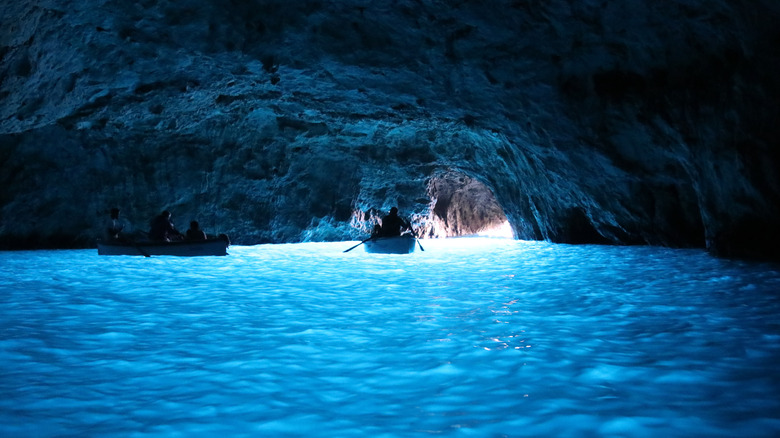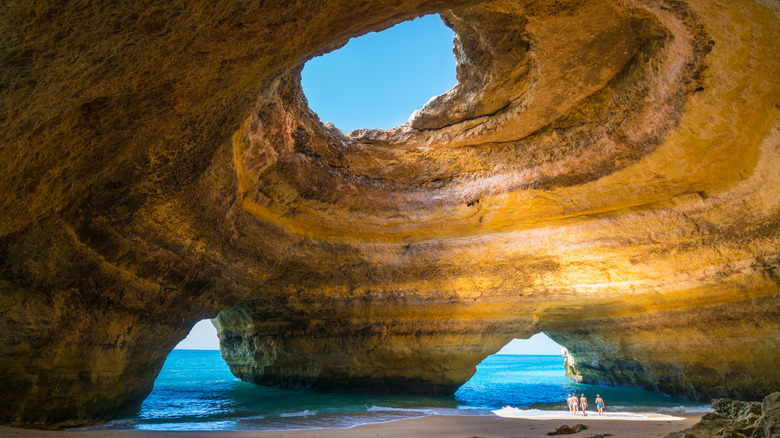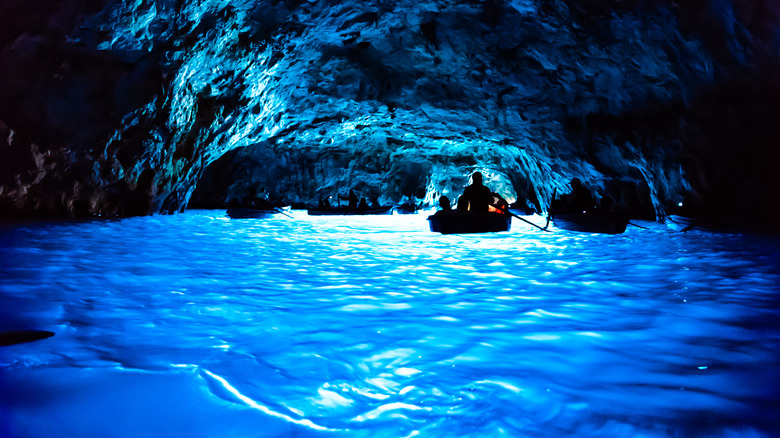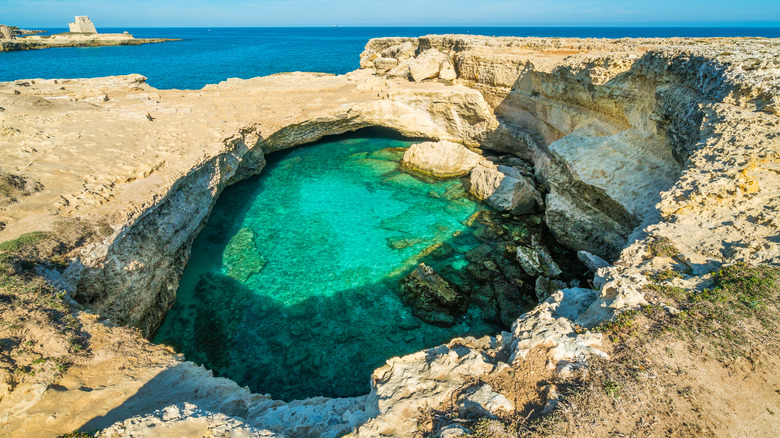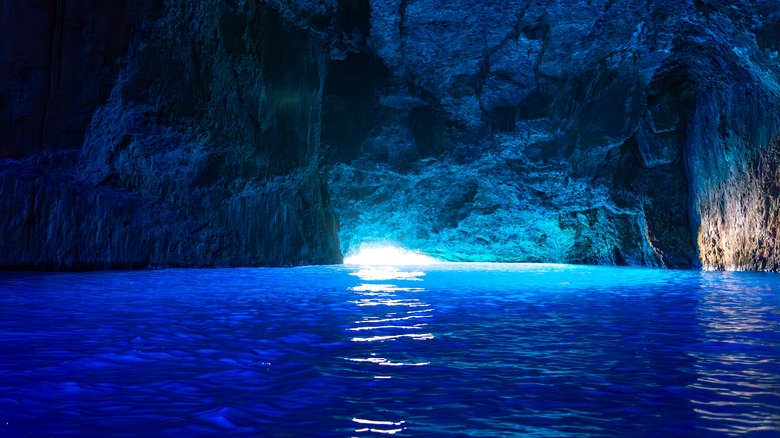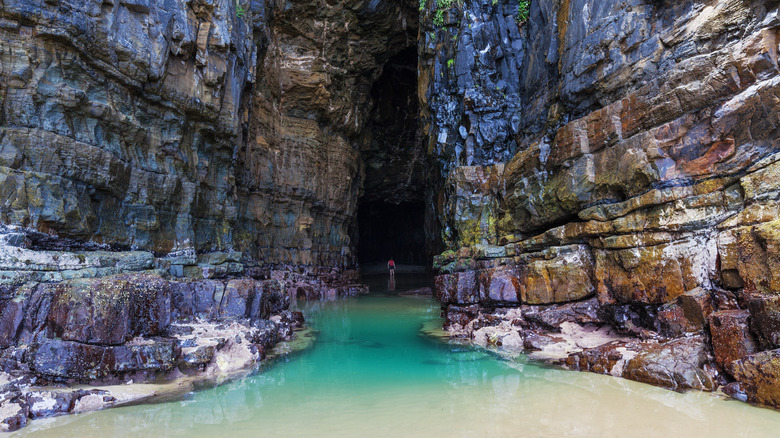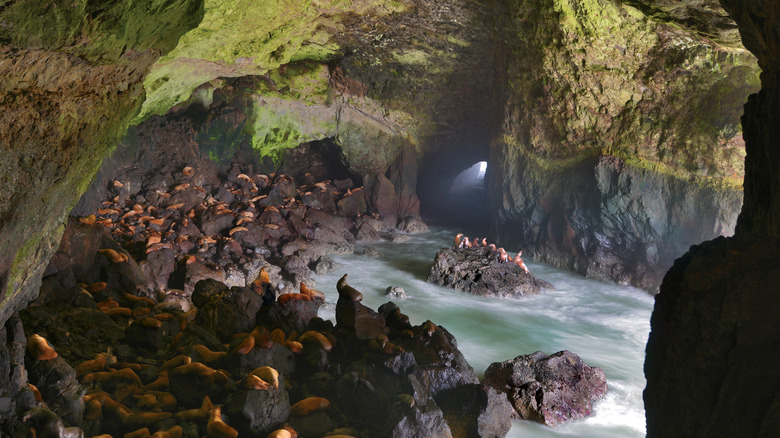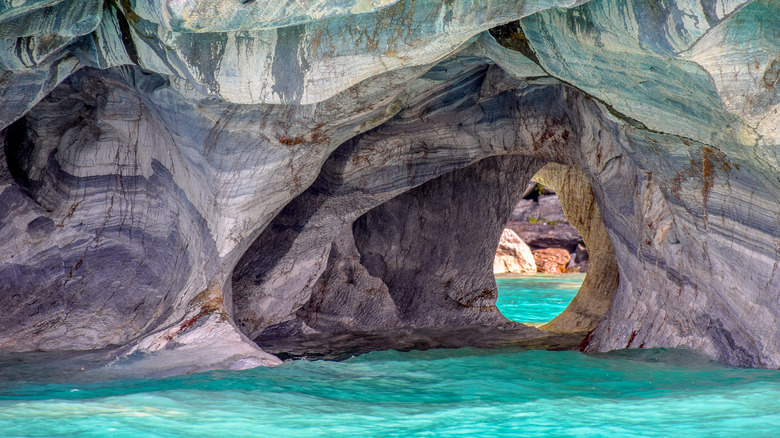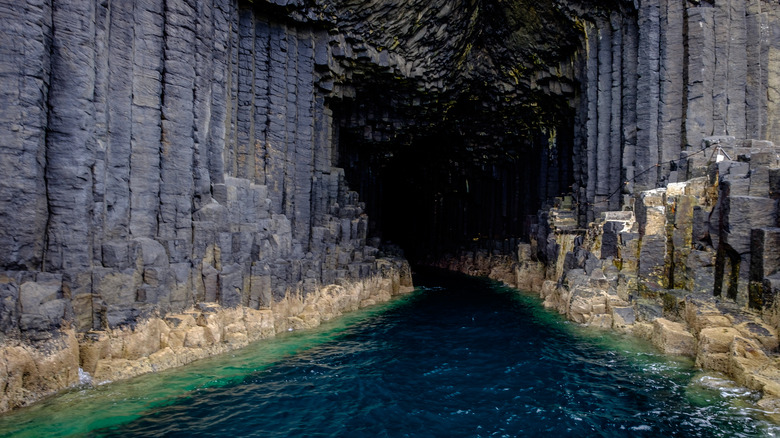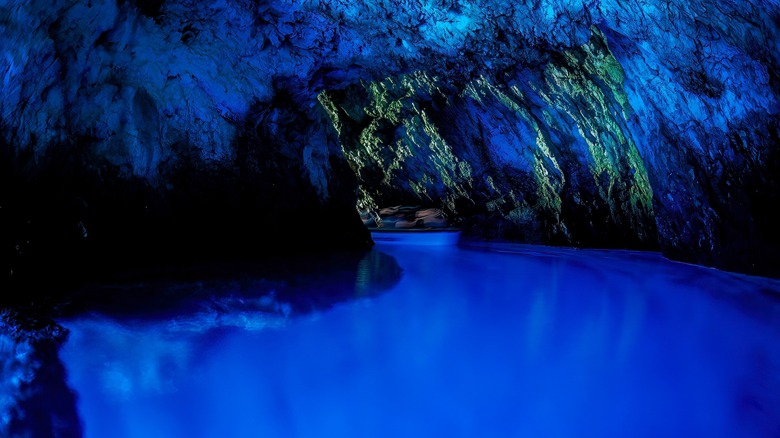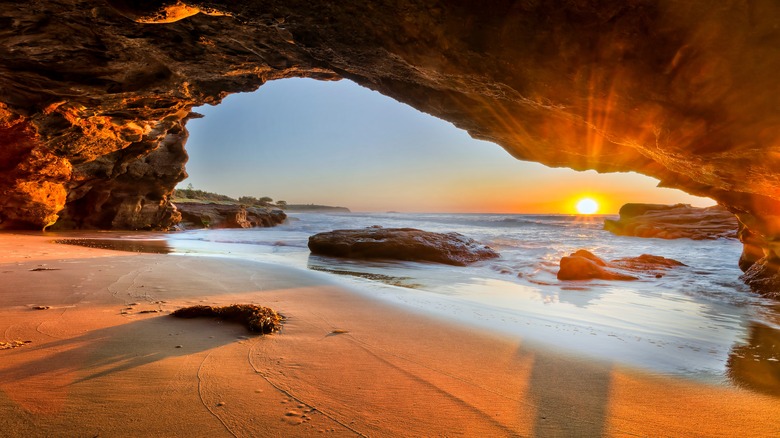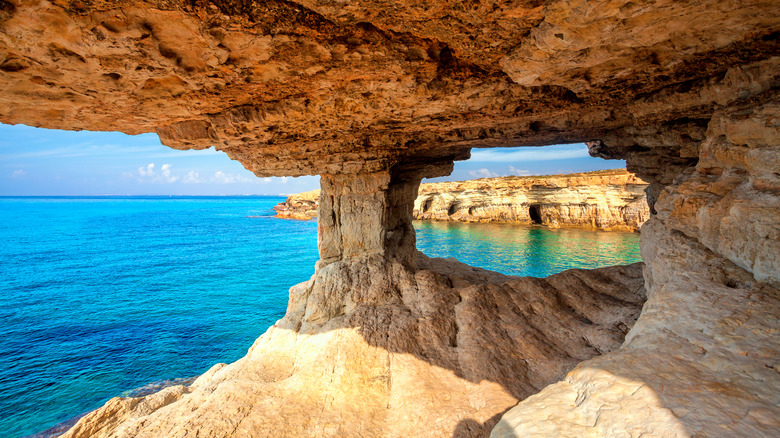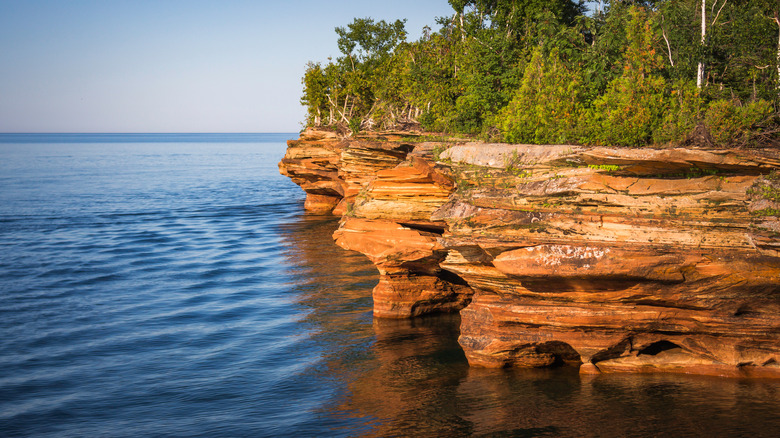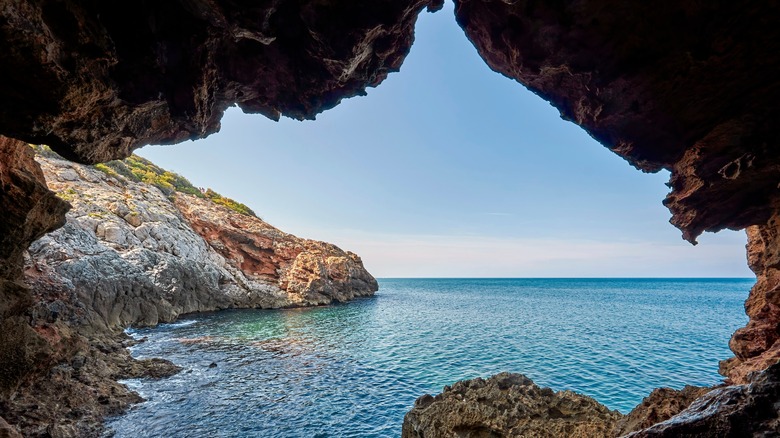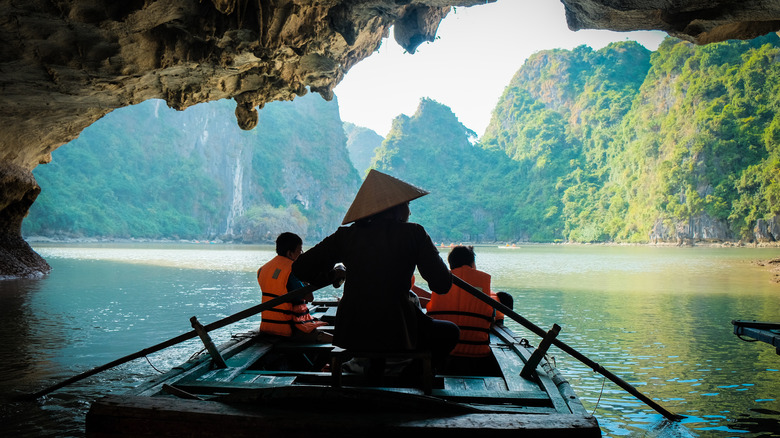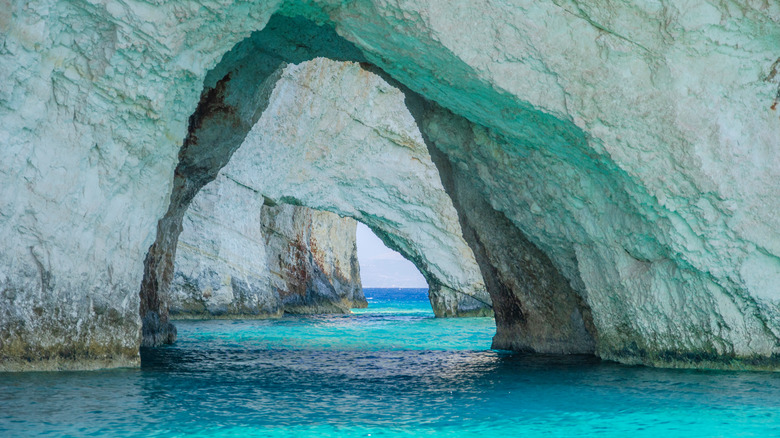15 Beautiful Sea Caves Around The World
Sea caves have a certain magic to them, with the echo of the waves splashing, the photogenic arched entrances, and the otherworldly color of the water. Nature has created these geological masterpieces using erosion and sea power as a working tool. From the luminescent blue waters of the Grotta Azzurra in Capri to the columnar basalt glory of the Fingal's Cave in Scotland, from the unbelievable marble formations in Chile to ocean caves with sea lions in Oregon, our planet is packed with beautiful sea caves worthy of any bucket list.
Usually, to visit one, you must embark on a boat tour or follow a special route with an experienced guide. Some are well-known and may get crowded (like Capri's Blue Cave); others are more remote and have limited opening times (like Cathedral Caves in New Zealand). We've collected the most striking examples of the sea caves. Use this article to add some new entries to your bucket list.
Benagil Cave, Portugal
Benagil Cave is the jewel of the Algarve region in Portugal. It is the ultimate stunner and undoubtedly one of the most beautiful sea caves in the world. It is thought to be over 23 million years old and boasts a domed interior with a skylight hole in the middle. While you may have seen its iconic look in pictures, nothing can prepare you for visiting the cave for the first time. Standing under the limestone "ceiling" and watching the light rays traveling through the hole and illuminating the inner beach is a priceless experience. Benagil can only be reached from the sea. Be aware that coming in the high season means crowds of people watching this beauty next to you.
The cave is part of a fragile ecosystem of the spectacular Algarve coastline, and overtourism has put it at risk. Before, one of the most popular ways to experience Benagil was by kayaks and SUPs. In 2023, this practice was banned by local authorities. Now, the only way to see this natural marvel is by embarking on a boat tour. Most tours start in Portimão and cost around $20-30, depending on the program. Late spring and early autumn are the best times for a comfortable visit without the crowds.
Blue Grotto, Italy
There's arguably no sea cave with a bigger cultural footprint than the legendary Grotta Azzurra along the coastline of the enchanting island of Capri. Although relatively tiny (only 82 feet wide and 196 feet long), it draws thousands of visitors daily and mesmerizes with the blue color of the water that seems unreal, and its history is as fascinating as its appearance. Having been a Roman shrine and personal swimming pool of Emperor Tiberius in ancient times, the cave was forgotten for many centuries and then rediscovered by two German travelers in 1838. Mark Twain visited it, many artists painted it, and the cave was even featured as a location in August Bournonville's "Napoli" ballet.
While being a must-visit on Capri, visiting the Blue Cave during summer can become quite an ordeal. Think of long waiting times to enter the narrow arched portal entryway, a hurried excursion inside, and a constant sense of rushing. Spring and early autumn work perfectly for a calmer experience, while noon is when the light creates the best translucent effect inside. The best way to visit is by going directly to the Blue Grotto's entrance, where the rowboats are moored. The price of the ticket is €18, which confusingly is divided into two prices: €14 for the boat service and €4 for the cave entrance.
Grotta della Poesia, Italy
Beautifully named the Grotta della Poesia ("Cave of Poetry" in Italian), this geological gem is among the most stunning natural treasures of the Puglia region in the Italian south. A natural pool with a picturesque archway into the open sea, it's a contemplative sight and a perfect background for your photos. Before 2019, the attraction was a popular sinkhole for diving, cliff-jumping, and swimming, but things changed when Grotta della Poesia became a part of the Roca Vecchia archeological site, and swimming activities were banned.
Today, visiting the Cave of Poetry is more of a historic visit than an aquatic adventurous one. There is a €3 fee to enter, and you can also see the prehistoric inscriptions at the Grotta della Poesia Piccola, the Madonna of Roca Vecchia obelisk with a beautiful vista of the Puglia's rugged coastline, and the medieval Torre di Maradico atop the cliff. While the swimming ban is in place, you will still see people jumping in the water and sunbathing on the rocks, taking chances with the lax prohibition enforcement by the guards. We would still suggest taking the swimming escapades to equally charming Portulignu Bay and Torre dell'Orso beaches nearby.
Kastellorizo Blue Cave, Greece
The Mediterranean Sea has many sea caves with vivid blue waters inside, but some are marketed better than others, attracting thousands and putting the fragile caves in harm's way. If you want a more peaceful and fulfilling tour of spectacular limestone formations, head to the Dodecanese Greek island of Kastellorizo, where another Blue Cave is located. Expect pure excitement upon entering as the light reflects from the sea bottom, creating a radiant, mysterious, azure color and illuminating everything inside the cave.
The best part about Kastellorizo Blue Cave? There won't be crowds. You may even wait for the boat to fill up with people at the harbor of Kastellorizo Port; that's how underrated this attraction is. The tours are organized by local companies, and the best way to get yourself one is by walking along the boardwalk and asking around. Usually, the price for the round-trip experience with an excursion will cost you around €10. Late morning and noon are the times with the best lighting inside.
Cathedral Caves, New Zealand
The unfiltered beauty of the Catlins Coast awaits you during a visit to Cathedral Caves on New Zealand's South Island. These caves are not a grab-a-tour kind of attraction, and a certain degree of adventure is included. First, the formations are only open when the tide is low and the weather permits a safe visit. Secondly, you have to hike for around half an hour through the rainforest from the designated parking spot to reach the Cathedral Caves. But once you see their grandeur, all the effort is justified.
The caves are made up of two Jurassic sandstone cave passages that are 656 feet in length. While the Maori knew about the existence of these structures for a long time, researcher Thomas Hocken gave them their modern moniker, inspired by European cathedrals and the specific echoing sounds inside. You're guaranteed to proclaim "wow" when entering the wide natural hallway and looking through the portal into the untamed and endless Waipati Beach. The place is wild; occasionally, penguins and seals will come to say hello.
Sea Lion Caves, Oregon
The Oregon Coast is filled with magnificent natural attractions, but few can rival the Sea Lions Caves in sublimity; it's a must-see stop on any fantastic West Coast road trip. Being here is like having a glimpse of a different world. The centerpiece of the experience is the gorgeous 125-foot-tall domed sea cave filled with hundreds of Steller sea lions. Aside from the unforgettable sight of these marine creatures in the wild, visitors are also enchanted by the music of the echoing waves intertwining with the seals "singing." Few other sea caves in the world promise such an accessible chance for wildlife observation.
Sea Lion Caves is a privately owned wildlife sanctuary. The entrance fee is $18 ($12 for children, kids under 4 go free), the parking is free, and the visit includes 400 yards of uphill and downhill walking. The cave with sea lions is accessed by an elevator. The attraction is just 10 miles from Florence, so it's an easy Oregon day trip. For the best chance of seeing many sea lions come during the winter months, as spring and summer see the animals moving into rookery areas, and you may find yourself in an empty cave.
Marble Caves, Chile
The pristine glacial waters of Lago General Carrera in North Patagonia are a fitting accompaniment to the phantasmagoric Marble Caves (or Capilla de Mármol). Blue, silver, white, orange, and black hues mix on these beautifully carved formations, and turquoise is the dominant color of the lake waters. Exploring this marvel of nature at your own pace while kayaking is among the most rewarding experiences in this part of Chile. You slowly glide from a marble chapel to a chapel duly appreciating Mother Nature's work.
Before embarking on a tour, be sure to check the weather. Marble Caves are only accessible when the conditions are good and there are no waves. Tours start from Bahía Manso. Puerto Río Tranquilo, located 4 miles away, is your best base with several accommodation choices and restaurants. The morning will give you the best light for picture-taking and unhurried admiring, and a kayaking tour costs about $50.
Fingal's Cave, Scotland
The black-and-green island appears on the horizon. Its upper parts are classic rugged rocks, but the columns, those geometrically perfect vertical boulders that seem as if they were laid in Minecraft, catch your attention. In one spot, it's incredibly dark, and the pillars form an entrance to Fingal's Cave, one of the most spellbinding natural sights of the Scottish Hebrides. Forged by the force of the water throughout millions of years of erosion, this geological attraction looks like the gates of some fantasy kingdom from the Tolkien books.
The sea cave is very much real, and you can even take a peak inside. It is about 230 feet deep and has a tall, 60-foot-high ceiling. The narrow stream of seawater reaches into the cave, and the arched portal-like entrance is a sight to behold. Fingal's Cave is not among the easiest or cheapest day trips and can only be reached with a boat tour, as the island it is located on (Staffa) is uninhabited. Tours usually start from the Hebrides gateways of Tobermory, Fionnphort, and Iona, and you can find a list of tour operators on the Mull & Iona website.
Blue Grotto of Bisevo, Croatia
The Croatian region of Dalmatia offers a kaleidoscope of picture-perfect islands, historic red rooftop towns, and mouthwatering local cuisine. Among this idyll, you find the tiny island of Biševo, famous for its beautiful Blue Grotto. It's a tiny cave with a length of only 78 feet, but what an awe-inspiring sight it is, with ultra-clear blue waters, the magical azure glow, and illuminated limestone walls. You won't be the only one seeking to witness its marvelous haze, though. The cave is a well-known attraction in the region and is serviced by many tour operators.
The shoulder season (spring and autumn) is perfect for catching the sunrays and escaping the queues. Don't even bother going when it's cloudy, as the whole azure glow is only possible because of the sun's reflection. Visiting costs differ depending on your starting point. If you're departing from Split or Trogir, expect to pay around $85 for a five-island tour that includes visiting the cave.
Caves Beach, Australia
Sometimes, there's no need to book expensive boat tours or hike for miles to reach the sea caves. That's what you're getting at Caves Beach, Australia. Located on the Swansea peninsula in New South Wales, it's a spectacular corner of the South Pacific's sandy perfection, one that also happens to be packed with easily accessible rocky coastal caves. Be aware, though, that you can only safely explore them during the low tide. It's the open ocean we're talking about here, and it deserves respect.
What you have at Caves Beach is a perfect combination of urban and wild. Fancy a flat white break at a hip third-wave coffee shop? The suburban cafes less than a mile away are at your service. If you're looking for ultra-scenic arched caves that double as a golden beach, that's exactly what awaits you here. We're in Australia, so surfing is a go-to option; the stretch is ideal for practicing your swell-catching moves. Deep sea fishing is another activity to try.
Ayia Napa Sea Caves, Cyprus
White and turquoise harmonically coexist in the marvelous Ayia Napa Sea Caves area. It's a dramatic sight with multiple limestone cave formations located less than 5 miles from the resort town of the same name, next to stunning Cape Greco on the southeastern coast of Cyprus. The beauty of the waters beckons visitors in, and it is almost impossible to resist the urge to jump in immediately. You can do just that by cliff diving and snorkeling, as the sea cave area is among the most popular locations on the island for these activities.
One of the great advantages of these sea caves is their accessibility; you can either take a boat tour from Ayia Napa or come by car following a dirt road. There's free paved parking next to the attraction. If you're on a boat, you'll just get into the water and back on your vessel, but accessing caves from land is trickier. You can either cliff jump or use the ropes to descend to the cave area. Pack water shoes, as the terrain is rocky and uneven.
Apostle Islands Sea Caves, Wisconsin
It isn't a single cave; it's a whole cave kingdom at Apostle Islands in Wisconsin. Carved by the waves of expansive Lake Superior, these mesmerizing brownish formations are among the top reasons tourists flock to the 21 islands that form the gorgeous Apostle Islands National Lakeshore. They look as if Mother Nature put a brush to use and decided to bestow a special painting present on this corner of the U.S. There is a rich choice of sea caves and an interactive map for organizing your encounter accordingly. The most striking ones are found along the coast of Devil's Island, Sand Island, and Mawikwe Bay.
The sheer number of caves brings many options for how to access them. First, there's no entrance fee to the national lakeshore, and you will only have to pay for the parking depending on the size of your vehicle. Apostle Islands Cruises is the only authorized provider of sightseeing boat tours and shuttles, and you can also opt for a kayaking journey using one of the certified operators or embark on a self-guided sail.
Cova Tallada, Spain
Discover an untouched piece of the Mediterranean with the lesser-known Cova Tallada. Located on the fantastic Costa Blanca between the resort towns of Dénia and Xàbia, it's a hidden gem of a cave and a part of Natural Park Montgó. It is a wild place to visit, as there's no mobile network, and you're one-on-one with nature. A natural cave formed as many around the Meditteranean by sea erosion, it has also been used as a rough stone quarry to build nearby cities.
Talking about access, you've got two options. The easiest way is to book a tour from Dénia or Xàbia on a speedboat or catamaran. This way, you can comfortably enjoy the majestic views and see the cave without much effort, and tours start from a budget-friendly $11. You can also hike to Cova Tallada following the route that originates in Les Rotes, and it takes around 90 minutes to reach the cave. Be sure to check all the specifics of visiting Cova Tollada on the official Dénia website and obtain the necessary authorization.
Luon Cave, Vietnam
It's one thing to enter the cave and leave through the same entrance. It's a different level of awe when traversing a sea cave formed under a gigantic limestone rock. That's Luon Cave in Bo Hon Island, Vietnam. Located among the stunning scenery of Ha Long Bay, it's a must-visit destination for anyone looking for a superb sea cave experience. The best way to do it is by embarking on a kayak tour. Not only is it a stunning way to see the grandeur of one of the most beautiful bays in the world, but it's also an active adventure to remember.
A visit to Luan Cave is frequently included in the day trip cruises around Ha Long Bay. Typically, you can add kayaking or a bamboo boat ride as an extra. If you're hungry for more cave exploration, Sung Sot Cave is the largest cave in Ha Long Bay and another must in the area. Thailand is packed with amazing places to visit, and its caves are a must.
Blue Caves of Zakynthos, Greece
Many know the idyllic Ionian island of Zakynthos for its haunting shipwreck beach, but there are plenty of other coastal sights to check out. The northwestern part of the island is famous for the white limestone arched sea caves that bewitch you with their deep blue color. What's special here is that there is a series of caves forming a sort of arcaded coastal passage, a truly magnificent site.
If you want to see this natural masterpiece, get on a boat; access is only via sea. Agios Nikolaos and Zakynthos town are the most common departure points for the majority of tour operators, and the program usually includes sailing to Navagio Beach, so that you can see all the most beautiful sites of the island in one excursion. Prices of tours start at $40. Swimming and snorkeling are usually a part of the tour, so you will have a chance to fully embrace the deep blue.
